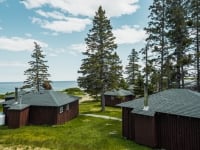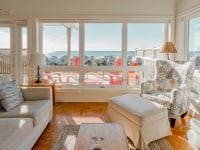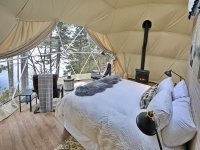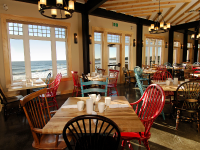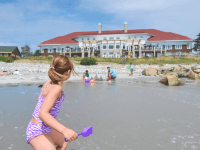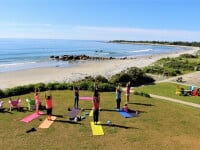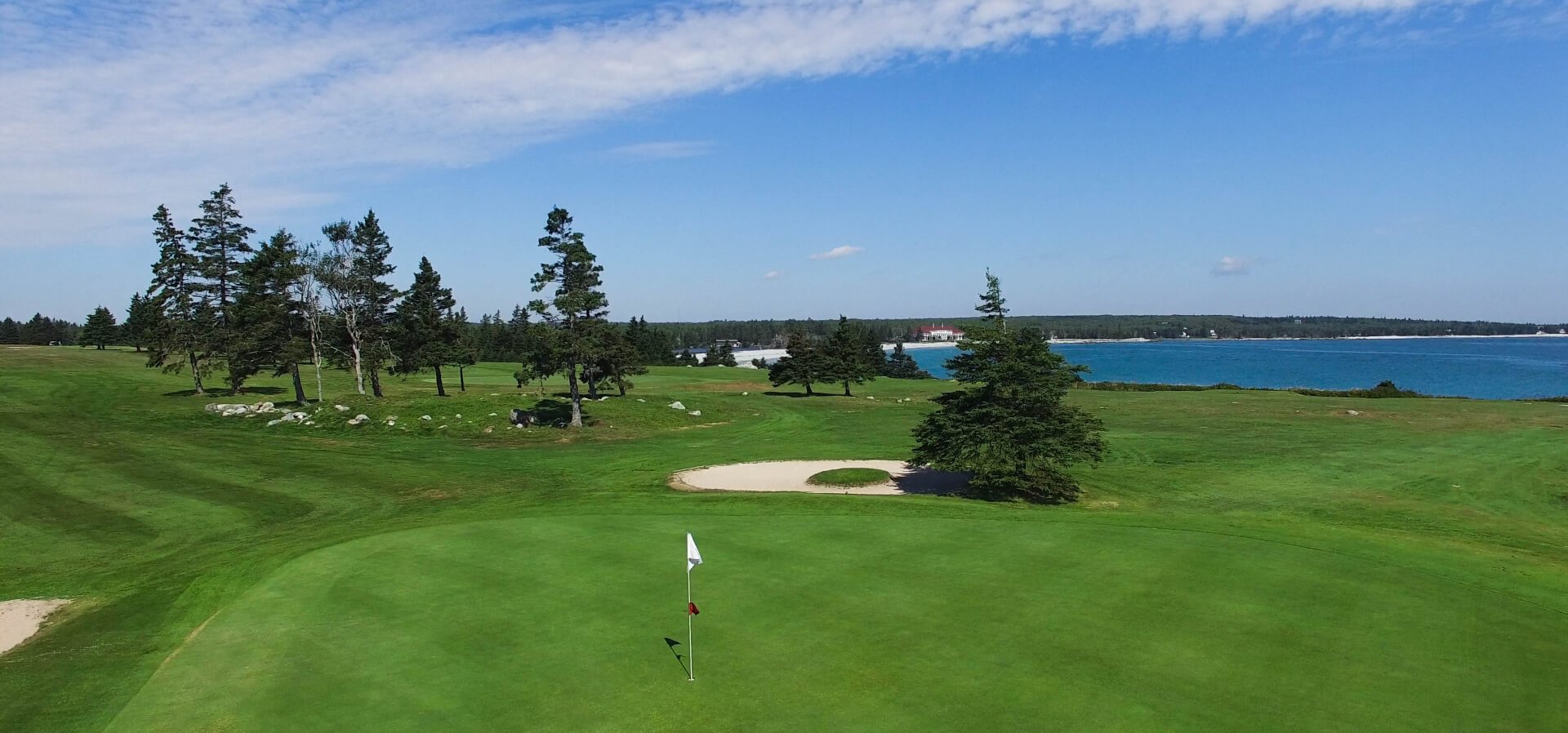Get Into the Swing of Things
Our golf course at White Point has challenged golfers of all levels from around the world. Described by many as the most picturesque golf course in Atlantic Canada, the course is challenging for the avid golfer, yet endlessly playable for recreational enthusiasts with small greens, narrow fairways, and strong sea breezes—all with incredible ocean views.
This spectacular nine-hole, par 35 oceanside course was established in 1932 shortly after opening our doors, and continues to be one of the most popular parts of our oceanside Beach Resort Community.
Don’t be surprised when you get asked ‘Where ya from?’. Our members are sincere and delighted to have the chance to share their course with you—and so are the foxes, deer, eagles, and herons!
Call 902.683.2485.
2024 Green Fees
Shoulder Season (Open – June 1) and (September 15 – Close)
- 9 Holes | $40.00
- 18 Holes | $48.00
- Twilight after 2pm | $35.00
High Season (June 2 – September 14)
- 9 Holes | $45.00
- 18 Holes | $54.00
- Twilight after 3pm | $35.00
Call 902.683.2485.
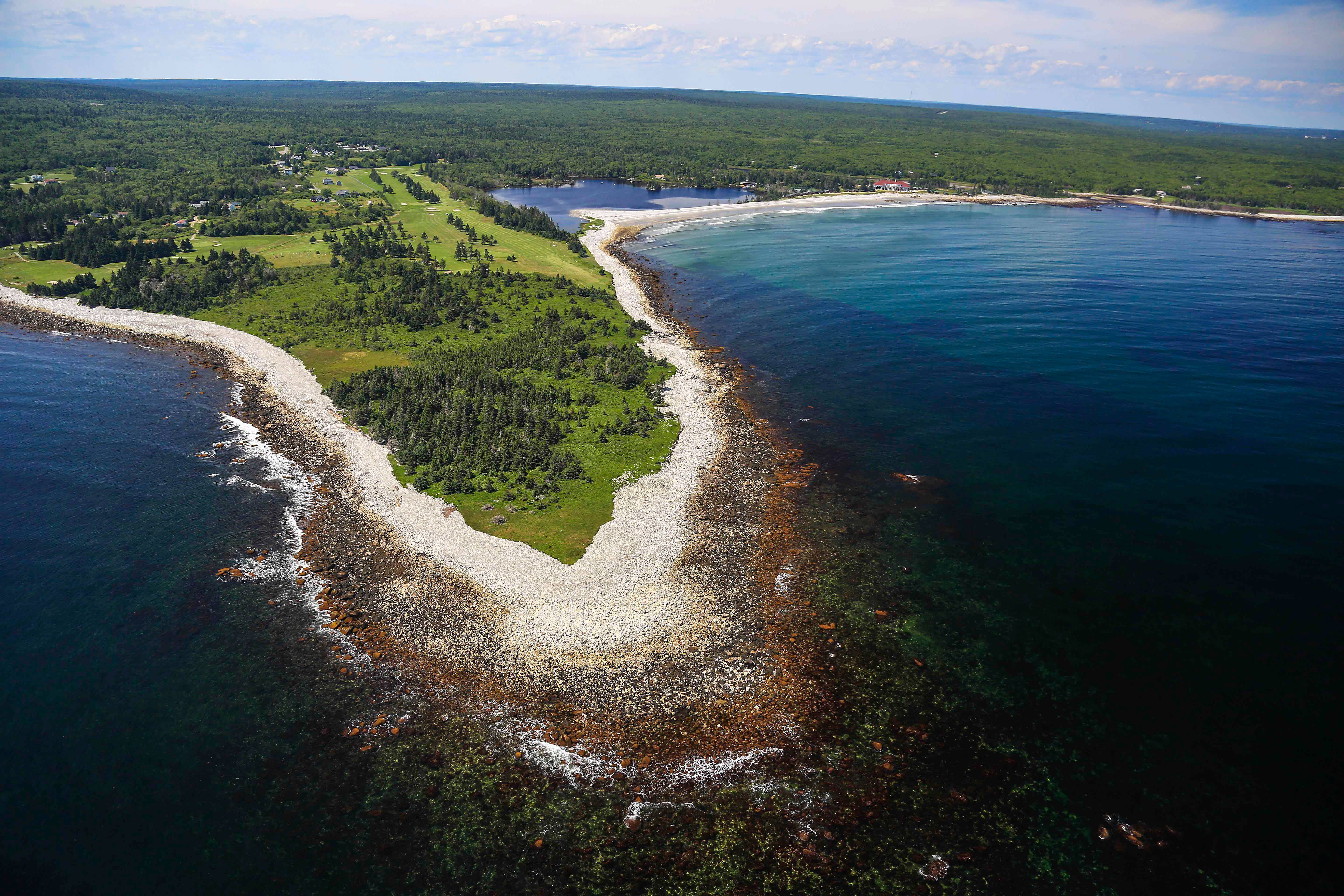
Multi Round Passes
- 9 Holes
- 5 Round Packs | $180.00
- 10 Round Packs | $360.00
- 18 Holes
- 5 Round Packs | $216.00
- 10 Round Packs | $432.00
Terms & Conditions: Multi Round Prices Include HST. Passes must be used in the year they are issued and are non refundable or transferrable
Rentals:
| Pull Cart | 9 Holes | $5.00 |
| 18 Holes | $7.00 | |
| Golf Cart | 9 Holes | $30.00 |
| 18 Holes | $40.00 | |
| Club Rental | 1/2 set | $20.00 |
| Full set | $30.00 | |
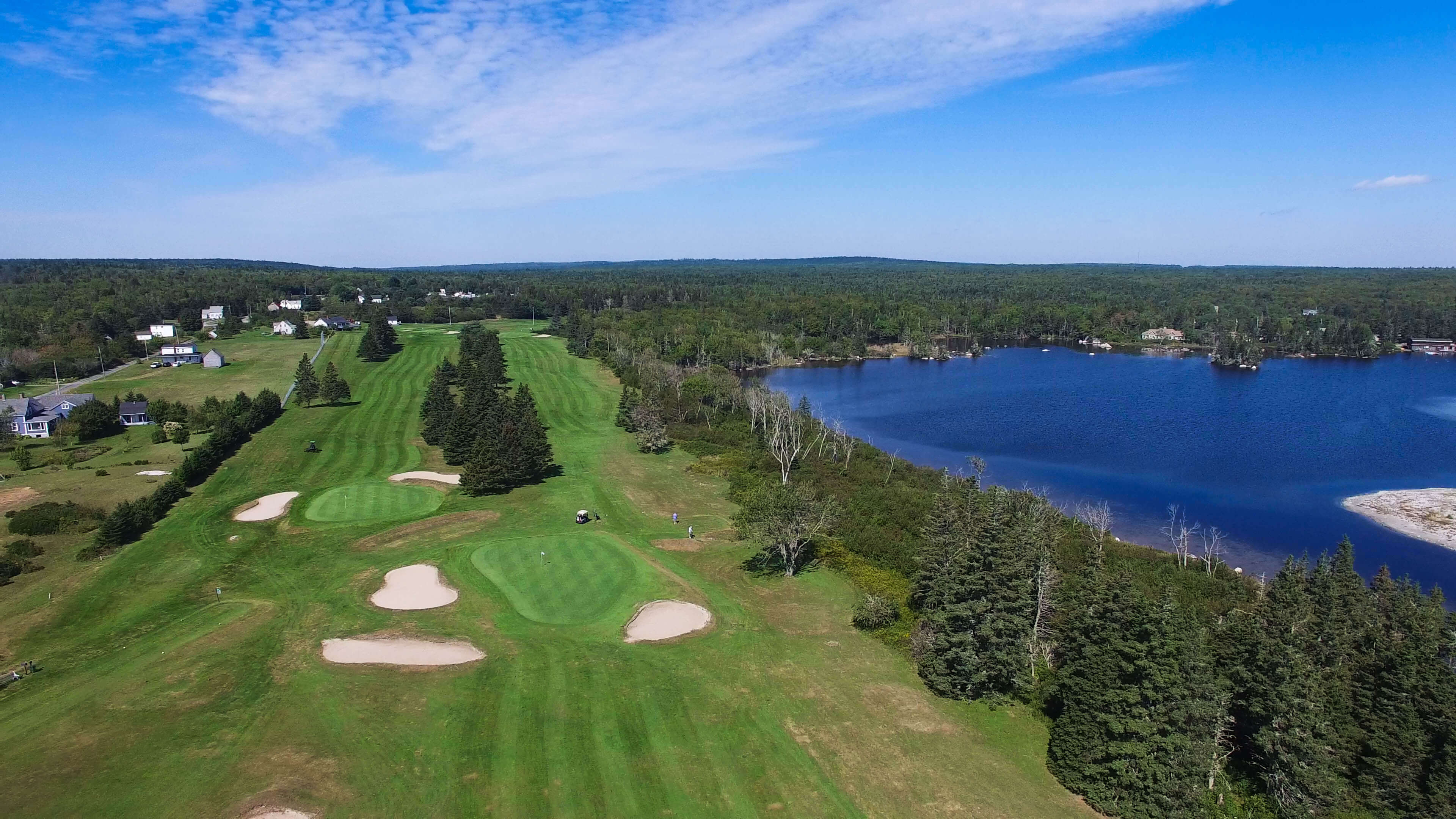
Course Information
Our course is situated on sixty acres of land that juts out into the Atlantic Ocean, adjacent to the Resort. The first seven holes offer spectacular views of the Atlantic, with Holes 4 and 6 on the shoreline itself. This is how golf is supposed to be played in Nova Scotia––on the water’s edge!
- Holes: 9
- Par: 35
- CPGA rated (67.0 with a slope rating of 115)
- 6,200 yards from the blue tee, 5,860 from the white and 5,438 from the red
- Six par 4 holes (five for ladies), two par 3 holes and one par 5 (two for ladies)

Groups, Tournaments, and Outings
Get your group together for a great day of golf at White Point.
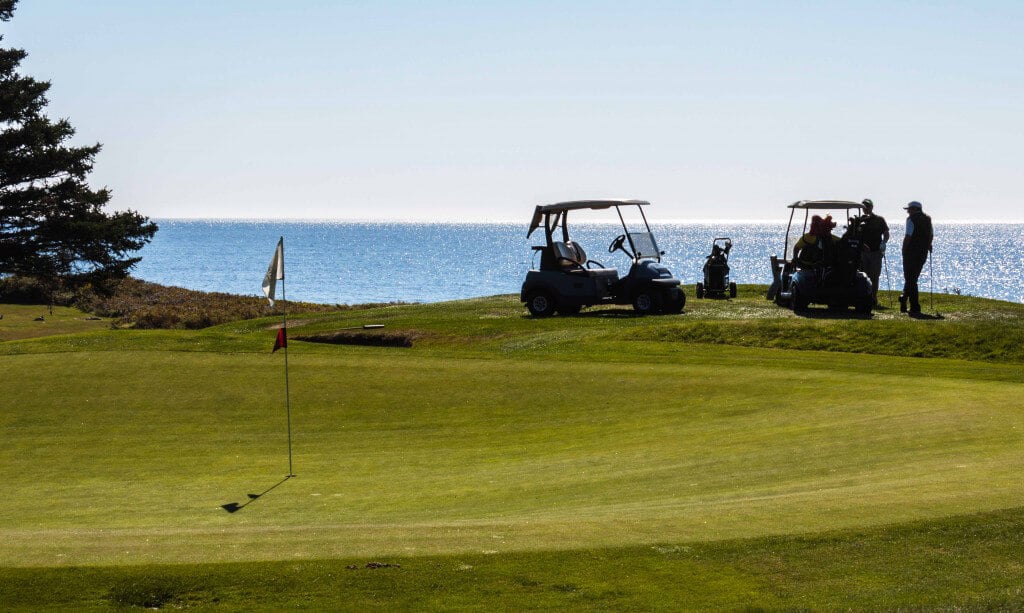
Rules & Score Card
- R.C.G.A. Rules govern all play.
- Maximum number of players in a group is four.
- Out of bounds marked by white stakes
- Lateral water hazards marked by red stakes
- A ball striking power lines must be re-hit.
- The following are considered obstructions: rocks in closely mowed areas (i.e. fairway), ball washers, water pipes outside of hazards, flag pole and garden, protective screen on 12 tee, club buildings, tee signs, well on 6/15, asphalt road, and graveled paths. If any of these items interfere with stance or swing, ball may be dropped within one club length of nearest point of relief. NO penalty.
- Know and observe the Rules of Etiquette of golf.
- Let faster players through. Replace all divots and repair all ball marks. Rake traps after use.
Hole by Hole Description
Hole #1
Straightaway par 4 with trees on both sides of the fairway. Tee shot is vital to score well on this hole.
Hole #2
Slight dog-leg right with a little brook running through the fairway at the 100 yard mark. The golfer has a choice: hit iron short of brook or choose a 1 or 3 wood over the brook.
Hole #3
Par 3 signature hole with bowl shaped green. You can use anything from a 9 iron to a 3 wood depending on the winds.
Hole #4
A lengthy par 3 right along the ocean. The golfer will hit a mid to long iron or rescue club to the green.
Hole #5
Par 4 with a sharp dog-leg to the right at the 120 yard mark (90′). Tee shot should be left centre of fairway. This will give a clear shot into the green.
Hole #6
Straightaway par 5 right along the ocean. Golfers may get mesmerized while watching the white surf and hearing the waves pounding onto the beach!
Hole #7
Straightaway par 4 with narrow fairway with trees on the left and lake on the right. To approach the green ball, you should end up below the hole. If not, a three putt green comes into play.
Hole #8
Short par 4 with trees on right side. To be safe, use a long iron or rescue club of the tee. Take a chance, hit a driver and try to reach the green.
Hole #9
Par 4 finishing hole has out-of-bounds and water hazard on the right side. A good tee shot is important to score well.
Course Architect
Donald Ross, Course Architect
The White Point Golf Course was designed by one of the golfing world’s most famous and talented architects, Donald J. Ross. Born in Dornach, Scotland in 1872, Ross spent his childhood surrounded by some of the most beautiful golf courses in the world. It was no wonder that he became passionate about what was then a relatively new sport at such a young age. As a young man, he became interested in greenkeeping and club making and spent some time as an apprentice to legendary Old Tom Morris at St. Andrews.
Eager to share the glorious game of golf with the rest of the world, Ross moved to Boston in 1899 to assist with the opening of the Oakley Golf Club. Sure enough, golf caught on in the “new world” and Ross was able to travel all over New England sharing his passion for the sport as well as his expertise on all aspects of golf course maintenance. Winter always meant the end of golf season to New Englanders — but not to southerners! Ross was thrilled to be hired by the Tufts family as an instructor in 1900 at the esteemed Pinehurst Golf Resort in South Carolina where he was able to play his game year-round.
Donald J. Ross practically grew up on a golf course. When it came to designing courses, he was a natural. He instinctively knew what elements made a course challenging and enjoyable and he also knew how to incorporate the beauty of the land into each of his designs whether they be in the highlands of Scotland or on the Southwestern coast of Nova Scotia. Ross designed over 600 golf courses and employed about 3000 people before his death in 1948. It’s no wonder that today’s most esteemed course architects still follow this list of “Ross Design Standards”:
- Make each golf hole present a different problem.
- Arrange the course so that every stroke must be made with a full concentration and attention necessary to good golf.
- Build each hole in such a manner that it wastes none of the ground at one’s disposal and takes advantage of every possibility.




